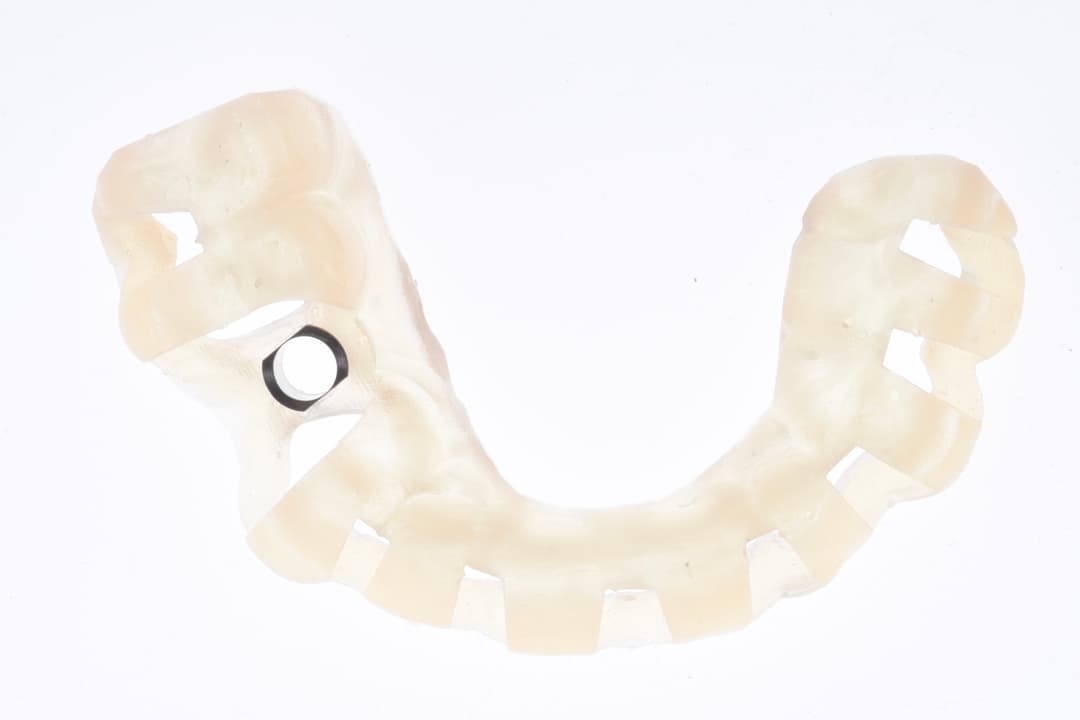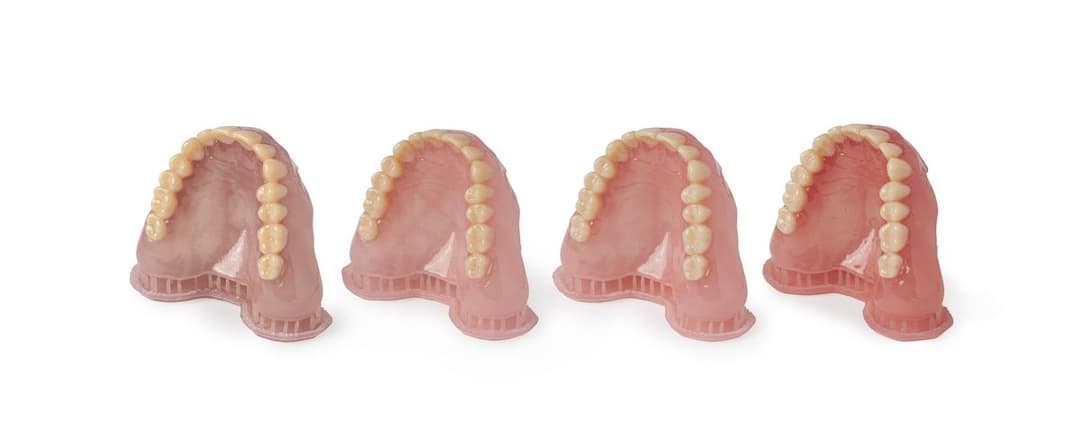Why Semmelweis University Chose to Start Their Own 3D Centre for Research in Dentistry and Healthcare
At Semmelweis University in Budapest, a team of healthcare researchers, practitioners, and instructors collaborate to promote the use of 3D printing technology in dentistry and general medicine. Together, these experts created the Semmelweis 3D Centre (SE3D) to support the Faculties of Medicine, Dentistry, and Pharmacology at the university. We spoke with Dr. Dániel Végh, a practicing prosthodontist who works with SE3D, to learn about how the centre was established and has grown.

Picture of the team (from left to right): Dr. Szabolcs Lányi, Dr. Daniel Palkovics, Gabriella Sódar, Dr. Imre J. Barabás, Dr. Dániel Végh Ph.D.
Can you describe the 3D Centre project at Semmelweis University?
The Semmelweis 3D Centre (SE3D) center is a facility for 3D printing technology at Semmelweis University. Our group’s mission is to promote 3D printing technology and build community among those using 3D technology at our university. The SE3D center was founded by Dr. Imre J. Barabás and Dr. Daniel Palkovics, and was supported by Prof. Dr. Béla Merkely, Rector of the Semmelweis University.
Both the medical and dental fields use 3D technology in day-to-day patient treatment, and both have ongoing innovative research. The SE3D Centre offers a cooperation platform for these researchers and clinicians. Our vision is to find new ways to address old and new medical issues through frontier experiments.
What led Semmelweis University to begin this project?
Exceptional staff and talented students already make Semmelweis University a leader in higher education. In addition, proper equipment is crucial for teaching and learning the hands-on details of modern digital dentistry. While individual research groups in various fields of medicine and dentistry have used 3D technology for years, until now, the university lacked a centralized 3D facility.
SE3D was founded in 2020 to connect different fields of healthcare, dentistry, education, and research who were using 3D printing to share knowledge and best practices. 3D technology provides us a limitless platform to dream, plan, and create.
Why did you choose Formlabs SLA 3D printers to be part of the 3D Centre?
Formlabs is a well-respected company in the 3D printing field. The Form 3B, installed at our centre, delivers high-end parts in a user-friendly, compact package.
The partners working with Formlabs are impressive. We liked that Formlabs is partnered with companies like Materialise, Digital Smile Design, and 3Shape. Additionally, Form 3B is an optimal choice for an average dentist willing to try digital additive technology in patient care. For example, in Hungary, dental offices can apply for government support to develop their businesses and support digitalization. Dentists and dental laboratories are already using these grants to invest in 3D printing because they can save money in the long term, create consistent results, and even consider same-day manufacturing.
And, although it is not related to our discipline, the company’s Hungarian roots and the fact that they have a research center and company location in Budapest add to the charm of using the Formlabs 3D printer.

How many 3D printers do you have today at the Centre?
There are nine 3D printers in the SE3D Center, and we have 3 Form 3B printers at the Semmelweis University, and this number is growing. Besides the Formlabs 3B SLA printers, we use FDM printers to create anatomic models and for education purposes. Our plans include the purchase of other 3D printers from Formlabs soon. Fuse 1 is very promising; we are advocating for this investment.
What other equipment does the 3D Centre have besides 3D printers?
SE3D has access to 3D intraoral scanners, virtual reality headsets, 3D modeling software, simulators, and more. Because the Centre is integrated into Semmelweis University, we have access to all the equipment owned by the Faculty of Dentistry. We also have partnerships with other technical institutes that can do CAD modeling, reverse engineering, mechanical and fluidic simulations, and even virtual reality.
Our students learn digital techniques with a variety of intraoral scanners, including 3Shape TRIOS, Planmeca Emerald S, and Medit 500.
How will 3D printing be used in dental education at the university?
The Faculty of Dentistry has introduced a new undergraduate course called Basics of Digital Dentistry in Spring 2021. In addition to lectures from the most renowned educators in Hungary, students will plan the treatment of a patient from a CBCT scan to implant-retained fixed partial dentures and carry out all the different steps of the process.
The situation is similar in the general medicine division. A new optional course was recently announced, called Basics of Digital Medicine, which aims to give practical knowledge to medical students about 3D technology. The curriculum covers the full spectrum of medical 3D technology, including data capture, DICOM data transformation, segmentation, 3D printing, and post-processing of the printed objects.
The curriculum is divided into two parts. The first part represents theoretical knowledge (radiology, basics of 3D modeling, and printing). The second part is division-specific and hands-on, where students encounter several different anonymized patient cases.

Why is it essential that dental students have access to these technologies?
3D printing is becoming standard in the fields of medicine and dentistry. The majority of dental practices and clinics use some sort of digital technology in their everyday work. Students need to have hands-on experiences with technology so they get insight and some practical training before they finish their studies.
3D printing is still a relatively new learning and teaching tool for medical education. In the general medicine division, patient-specific models with anatomical fidelity made from imaging datasets can significantly improve a new generation of surgeons’ knowledge and skills. This fidelity has allowed students to view and understand gross pathology and structural relationships before surgical intervention. Improved understanding through visualization has, in turn, allowed surgical teams to plan interventions more accurately and guide margins of resection, model appropriate implant dimensions and sometimes create the implant itself using 3D printing technology.
It is unquestionably essential to incorporate the possibilities offered by 3D technology in modern 21st-century medical and dental education.


